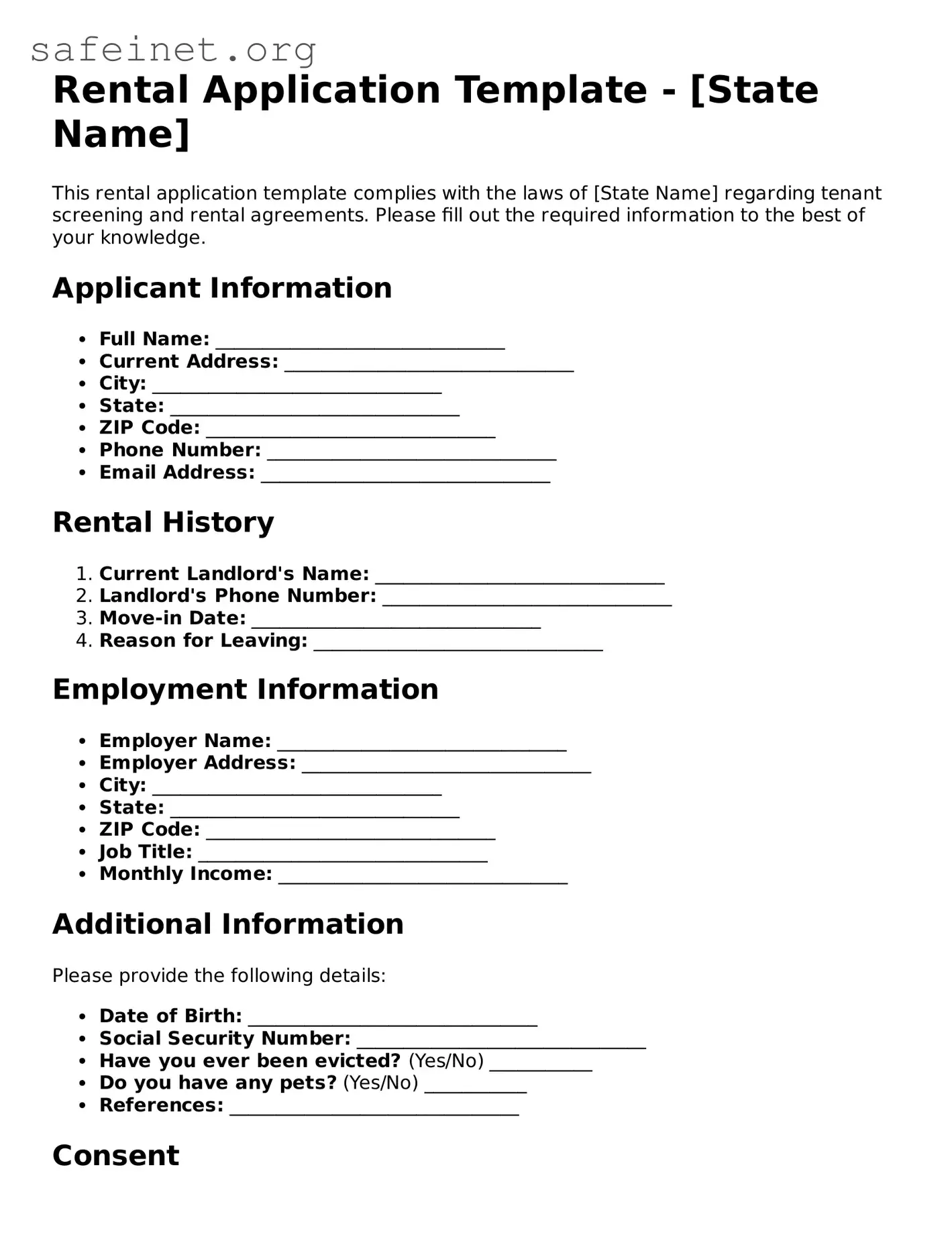What is a Rental Application form?
A Rental Application form is a document that prospective tenants complete when they wish to rent a property. This form provides landlords with important information about the applicant, such as their rental history, creditworthiness, income, and personal references. It serves as a tool for landlords to assess whether an applicant is a suitable tenant for their property.
Why do landlords use Rental Application forms?
Landlords use Rental Application forms to gather essential information that helps them make informed decisions. By reviewing an applicant's financial history and references, landlords can evaluate the risk of renting to a particular individual. This process not only protects the landlord’s investment but also helps ensure a safe and stable living environment for all tenants.
What information is typically required on a Rental Application form?
Generally, a Rental Application form requires applicants to provide personal details such as their full name, contact information, social security number, and date of birth. Landlords often request employment information, monthly income, and previous rental history. Additionally, personal references and consent for a credit check are commonly included in the application.
How does a credit check work in the Rental Application process?
When a Rental Application is submitted, landlords may conduct a credit check to assess the applicant's financial responsibility. This process involves reviewing the applicant's credit report, which includes their credit score, payment history, and outstanding debts. Based on this information, landlords can gauge the likelihood of timely rent payments.
Are there any fees associated with submitting a Rental Application?
Yes, many landlords charge a non-refundable application fee when a potential tenant submits a Rental Application. This fee covers the cost of processing the application, including credit checks and background checks. Always inquire about any fees up front to avoid surprises during the application process.
How long does it take for landlords to process a Rental Application?
The time it takes to process a Rental Application can vary, depending on the landlord's policies and the thoroughness of the checks. Generally, applicants can expect to wait anywhere from a few hours to a few days for a response. If you have submitted an application, it’s always a good idea to ask the landlord for their estimated timeline.
Can a Rental Application be denied?
Yes, a Rental Application can be denied based on several factors. Common reasons for denial include poor credit history, insufficient income, a previous eviction, or negative references from past landlords. If denied, landlords usually must provide a reason and comply with legal requirements under fair housing laws.
What should I do if my Rental Application is denied?
If your Rental Application is denied, review the denial reason provided by the landlord. You can ask for clarification or additional details. Depending on the situation, it may be beneficial to address any issues or provide additional information to improve your chances in future applications. Seeking out a co-signer or looking for different rental options may also help.
Is it possible to appeal a Rental Application denial?
While appealing a Rental Application denial isn’t a formal process in most cases, you can certainly communicate with the landlord directly. If you believe there has been a misunderstanding, or if you have resolved issues that led to the denial, express this clearly. Some landlords may reconsider your application with additional information or documentation.
